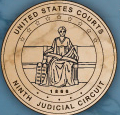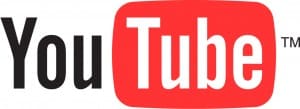The Troubling ‘Innocence of Muslims’ Ruling
 Update: I’ve received some new input that I’ve appended to the end of the article.
Update: I’ve received some new input that I’ve appended to the end of the article.
I have nothing but the greatest sympathy for Cindy Lee Garcia. According to her, filmmaker Mark Basseley Youssef lied to her about what film she was going to be in, saying it was an action film dubbed “Desert Warrior”, the director then took her footage, redubbed her dialog and put her in the controversial trailer for the film “The Innocence of Muslims”.
The 14-minute trailer became the subject of international scrutiny in 2012 as violence broke out in Muslim countries over the film and its inflammatory content. All of the people involved in the film, including Garcia herself, were threatened, ridiculed and pushed into a major public controversy, one that Garcia never agreed to be in.
But as sympathetic as her story is, the recent ruling in her favor is not only wrong-headed, but potentially dangerous. It’s earned strong criticism from nearly everyone involved in copyright, regardless of their political leanings, and, fortunately, is not likely to survive further challenges.
Still, the ruling has turned what was previously a novelty case, an uninteresting side copyright case about a major international news story, into a potential bombshell that could have major repercussions for all rightsholders, especially those who work in film and photography.
The History of the Case
 As discussed above, Garcia claims that she was paid some $500 for three and a half days of work by Mark Basseley Youssef, who told her she was playing a part in an upcoming action film named “Desert Warrior”.
As discussed above, Garcia claims that she was paid some $500 for three and a half days of work by Mark Basseley Youssef, who told her she was playing a part in an upcoming action film named “Desert Warrior”.
However, that film never materialized and, instead, a portion of Garcia’s work was edited, dubbed and spliced into a 12-minute trailer for the film “Innocence of Muslims”, which was then uploaded to YouTube.
In 2012, the video became a flashpoint among Muslims worldwide and was connected with riots that occurred in Egypt and Libya, the latter of which resulted in the deaths of four Americans.
Garcia, understandably upset at her inclusion in the film, sought to have it pulled down. She filed a Digital Millennium Copyright Act notice seeking to have it removed. Since the law requires the notice come from a rightsholder, she argued that she had a copyright interest in her performance, one that was separate from the film, and since she had signed no waivers or contracts, those rights still rested with her.
Google, which owns YouTube, rejected that argument. Though actors often sign waivers that include copyright statements, they are not typically considered copyright holders in their performance. As such, Google refused to comply with the notice and left the work online.
Garcia then sued Google for not removing the work. The district court, however, ruled against her and backed Google. This prompted Garcia to appeal to the 9th Circuit, who heard the case in June of last year.
Most people who were watching the case expected the 9th Circuit to rule the same as the district court and, in doing so, largely put this issue to bed. However, the ruling that came down last week, was nothing short of a surprise to almost everyone.
What the Ruling Says
The ruling, which was written by Judge Alex Kozinski made several arguments as to why Garcia has a legitimate copyright interest in the work and why the video on YouTube might be a copyright infringement.
Those arguments include:
- Performances by Actors Are Copyrightable: Saying that the performance of an actor meets the qualifications for copyrightability if it is both fixed into a tangible medium of expression and contains a basic amount of creativity.
- Garcia’s Work Was Not for Hire: Since Garcia did not sign any work for hire agreements prior to performing, her work can not be considered for hire and thus she retains ownership of it.
- No Implied License: Since Youssef lied to Garcia about the film, any implied license to use her work was void as she did not agree to have her work used this way.
Judge Kozinski then went on to say that, since Garcia had and still was receiving death threats for her unwitting role in the film, there was irreparable harm. Given that the court found that removing the film from YouTube could mitigate that harm, Kozinski ruled that it was proper to not only order YouTube to remove the clip at issue, but to order YouTube to remove all copies of it from the service and block future uploads.
Finally, the court also ordered Google (and other parties to the case) to not speak or discuss the ruling for a full week after it was made. So even though the ruling was handed down on the 19th, it only came to light yesterday, the 26th.
The video is currently offline but Google has already said that they intend to appeal, starting with an en banc rehearing hoping to have the case heard before the entire panel at the 9th Circuit (rather than the 3-judge panel that ruled).
Why the Ruling is Dangerous
From a copyright perspective, the most important questions is whether or not an actor has a copyright in their work to date. To date, this is the first ruling to say that they might.
As the dissent, written by Judge N.R. Smith, and other commentators have noted, a performance of a work is not listed as a type of copyrightable work. In fact, the law specifically makes the right to perform a work an exclusive right of the copyright holder, creating a distinction between a copyrighted work and a performance of it.
For a work to be considered copyrightable it has to contain a requisite amount of creativity, which is very low, and be fixed into a tangible medium of expression. While no one doubts that acting is a creative field, acting, by itself, is not fixed. The person doing the fixing is the filmmaker and they, typically, are considered the copyright holder.
This ruling, however, could give copyright interest to everyone who appears in a movie and they are displeased with how the end product came out. While there’s no doubt that Garcia’s case is about as extreme as you can get, there’s no knowing where the line is drawn.
Could actors use this ruling to force studios to recut a film to their liking? What if a film is marketed differently than originally intended? This ruling is so novel and so new there’s just no way to know these answers.
This ruling could also, theoretically at least, effect photographers. If a model doesn’t like how the final product came out or was edited (provided he or she was creative enough to warrant copyrightability for their work), they too could come back and claim copyright infringement for use of their work.
However, the freedom of speech issues are also worrisome. Not only did the court rule that Garcia may have a copyright interest in the work, it went as far as to rule that YouTube had to pull down every copy of the film on its servers and stay silent on the order for a week, including six days post-compliance. None of these things were requested by Garcia (that I have seen) and all raise serious free speech question
This is especially true since the court did not rule definitively that the film infringed her copyrights. Even if we grant she has a copyright interest, there’s no guarantee that the film produced infringed it, but even if it did, many of the other copies of it may omit the infringing portion or may have other factors that could make them a fair use.
In short, the videos were removed from Google simply because of a dubious claim that Garcia has a copyright interest in them, that interest being limited to a few seconds of screen time.
All of this likely explains why Google’s lawyers responded so strongly to the ruling, asking for an emergency stay pending a rehearing en banc. In their motion they said the opinion was “stunning” and that the order was a “classic incursion on the First Amendment.”
In that statement, Google was probably right.
Bottom Line
I’m someone who is usually very critical of Google and very sympathetic to people like Garcia. Google is definitely a company with a far-less-than-perfect copyright record and my heart does go out to Garcia for the situation she was pushed into.
But this ruling is an attempt to drastically rewrite copyright law. So much so that an entire treaty, the Beijing Treaty on Audiovisual Performances was negotiated and signed in 2012 to serve almost exactly this function. However, the treaty has not been ratified in the U.S., nor any of the other signatories, save Syria.
Because of this, most seem to doubt that the ruling will survive even a rehearing en banc in front of the full panel of judges. But if it does and remains a part of U.S. law, it could drastically change the relationship between the people who are in front of the camera and those behind it.
But just how that relationship might change is unclear. As with many cases where rulings alter the law, the lines are unclear and the actual outcomes are unknown. While it’s easy to play up worst-case scenarios, those are never likely.
Still, one doesn’t need to picture a worst case scenario to see how this ruling could change U.S. copyright law forever and in ways the judges likely never intended.
Update: A reader emailed me a link to the treaty summary written up by the United States Patent and Trademark Office (PDF), which says that, according to them, “Under U.S. law, actors and musicians are considered to be ‘authors’ of their performances providing them with copyright rights.” While the role of the USPTO is purely advisory, this does make the legal theories seem significantly less outlandish and is an interesting twist on the case.
Want to Reuse or Republish this Content?
If you want to feature this article in your site, classroom or elsewhere, just let us know! We usually grant permission within 24 hours.
